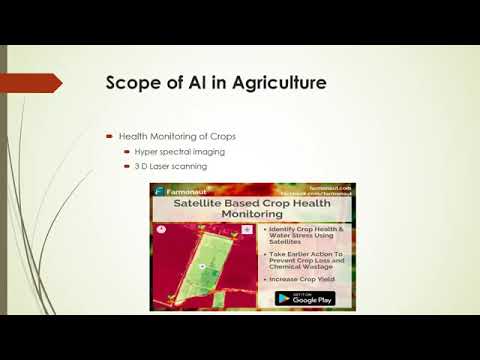Urgent Call for Increased Rural Road Funding: Boosting Grain Transport Efficiency and Sustainable Agriculture

“Australia needs an additional $1 billion annually for rural road maintenance to support efficient grain transport.”
In the vast expanse of Australia’s agricultural heartland, a critical issue is emerging that threatens the very foundation of our nation’s farming future. We find ourselves at a crossroads where the deteriorating condition of our rural roads is not just an inconvenience but a significant barrier to the efficiency and sustainability of our agricultural sector, particularly in grain transport. A recent report has shed light on this pressing matter, calling for urgent action and increased funding to address the challenges faced by our rural infrastructure.
As we delve into this complex issue, we must recognize the intricate web of factors at play. From the impact of climate change on road conditions to the rising costs of maintenance, the challenges are multifaceted. However, with these challenges come opportunities – opportunities to innovate, to implement sustainable practices, and to forge a path towards a more resilient and profitable agricultural future.
The Current State of Rural Roads: A Crumbling Foundation
Our rural road network is the lifeline of Australia’s agricultural sector, serving as the crucial link between farms and markets. However, this vital infrastructure is under severe stress. Local governments, tasked with maintaining over 650,000 kilometers of rural roads, are grappling with insufficient funds and escalating maintenance costs. The result? A network of roads plagued by potholes, deteriorating surfaces, and structural issues that significantly impede the efficient transport of grain and other agricultural products.
- Increased wear and tear due to heavier vehicles and more frequent use
- Climate impacts, including extreme weather events, accelerating road degradation
- Rising costs of materials and labor for road repairs and maintenance
These factors combined have created a perfect storm, leaving many rural communities with roads that are no longer fit for purpose. The implications for the grain industry are particularly severe, as the transport of bulk commodities relies heavily on a robust and well-maintained road network.
The Economic Impact: More Than Just Potholes
The deteriorating condition of rural roads extends far beyond mere inconvenience; it strikes at the heart of our agricultural economy. Inefficient transport routes lead to increased fuel consumption, vehicle wear and tear, and longer travel times. These factors collectively drive up the cost of getting grain from farm to market, ultimately impacting the profitability of our farmers and the competitiveness of Australian grain in global markets.
Consider the following economic implications:
- Increased transportation costs due to longer routes and slower speeds
- Higher vehicle maintenance expenses for farmers and transport companies
- Potential loss of market share due to delays in grain delivery
- Reduced farm gate prices as transport costs eat into profits
These economic challenges underscore the urgent need for targeted investment in our rural road infrastructure. By improving the efficiency of our grain transport network, we can enhance the profitability of our agricultural sector and strengthen Australia’s position in the global grain market.
The Call for Increased Funding: A $1 Billion Annual Investment
The recent report brings to light a startling figure: an additional $1 billion per year is required to maintain existing road conditions in rural and remote areas. This substantial increase in funding is not just a recommendation; it’s a necessity for the survival and growth of our agricultural sector.
“Climate impacts and rising costs challenge local governments in maintaining over 650,000 km of rural roads.”
Here’s what this increased funding could achieve:
- Preventative maintenance to extend the lifespan of rural roads
- Upgrades to key transport routes to accommodate heavier vehicles
- Implementation of climate-resilient road construction techniques
- Improved safety features, reducing accidents and potential grain losses
By prioritizing rural road projects over urban megaprojects, we can ensure that the backbone of our agricultural economy receives the attention it desperately needs. This shift in focus is crucial for maintaining the efficiency of our grain transport infrastructure and supporting sustainable agriculture practices.
The Role of Technology in Rural Road Management
While increased funding is crucial, we must also embrace innovative technologies to maximize the impact of our investments. This is where companies like Farmonaut come into play, offering advanced solutions that can revolutionize how we manage and maintain our rural road network.
Farmonaut’s satellite-based technology and AI-driven insights can contribute significantly to rural road management:
- Real-time monitoring of road conditions using satellite imagery
- Predictive maintenance scheduling based on AI analysis of road usage and weather patterns
- Optimized route planning for grain transport, reducing travel times and fuel consumption
- Integration with fleet management systems for efficient logistics coordination
By leveraging these technological advancements, we can ensure that our investments in rural road infrastructure are targeted, efficient, and yield maximum benefits for the agricultural sector.
Sustainable Agriculture Practices: A Holistic Approach
Improving rural road infrastructure is just one piece of the puzzle. To truly address the challenges facing our agricultural sector, we must adopt a holistic approach that incorporates sustainable agriculture practices. This approach not only complements the efforts to improve road infrastructure but also ensures the long-term viability of our farming communities.
Key aspects of sustainable agriculture that can benefit from improved rural infrastructure:
- Precision agriculture techniques for optimized resource use
- Improved access to markets for locally-produced, sustainable goods
- Enhanced ability to implement climate-smart farming practices
- Better connectivity for rural communities, facilitating knowledge sharing and innovation
Farmonaut’s suite of tools, including satellite-based crop health monitoring and AI advisory systems, can play a crucial role in supporting these sustainable agriculture practices. By providing farmers with real-time data and insights, we can help them make informed decisions that not only improve their productivity but also contribute to the overall sustainability of the agricultural sector.
Explore Farmonaut’s API for advanced agricultural insights
Climate Impact on Rural Roads: Adapting to Change
The impact of climate change on our rural road network cannot be overstated. Extreme weather events, such as intense rainfall, prolonged droughts, and heatwaves, are accelerating the degradation of road surfaces and underlying structures. This climate-induced stress on our infrastructure demands not just increased funding but also innovative approaches to road construction and maintenance.

Strategies for climate-resilient rural roads:
- Use of heat-resistant materials in road construction
- Improved drainage systems to handle increased rainfall
- Regular monitoring and assessment of road conditions using satellite technology
- Implementation of vegetation management strategies to protect road edges
By incorporating climate considerations into our rural road management strategies, we can build a more resilient infrastructure that withstands the challenges posed by changing weather patterns. This approach not only protects our investment in rural roads but also ensures the continuity of efficient grain transport, even in the face of climate adversity.
The Benefits of Preventative Maintenance: A Long-term Perspective
One of the key recommendations highlighted in the report is the importance of preventative maintenance. While it may require a larger upfront investment, the long-term benefits of this approach are substantial and far-reaching.
Advantages of prioritizing preventative maintenance:
- Extended lifespan of road infrastructure, reducing the need for costly major repairs
- Improved road safety, reducing accidents and potential grain losses during transport
- Consistent road quality, enabling more efficient and predictable grain transport
- Lower long-term costs compared to reactive maintenance approaches
By adopting a proactive stance on road maintenance, we can ensure that our rural road network remains in good condition, supporting the efficient movement of grain from farm to market. This approach aligns with sustainable agriculture practices, as it minimizes disruptions to the supply chain and reduces the environmental impact associated with major road repairs.
Access Farmonaut’s API Developer Docs for integration possibilities
Agricultural Policy Reforms: Supporting Infrastructure Development
To address the challenges facing our rural road network and support sustainable agriculture, we need comprehensive agricultural policy reforms. These reforms should prioritize infrastructure development as a key component of agricultural sustainability and economic growth.
Key areas for policy reform:
- Allocation of dedicated funding for rural road maintenance and upgrades
- Integration of climate resilience measures into infrastructure planning
- Support for technological innovations in road management and agriculture
- Collaboration between federal, state, and local governments for cohesive infrastructure strategies
By implementing these policy reforms, we can create a supportive environment for the development of a robust and efficient rural road network. This, in turn, will enhance the competitiveness of our grain industry and promote sustainable agricultural practices across the country.
Enhancing Supply Chain Efficiency: From Farm to Market
Improving rural road infrastructure is not just about fixing potholes; it’s about enhancing the entire agricultural supply chain. Efficient farm to market transportation is crucial for maintaining the quality of grain, reducing post-harvest losses, and ensuring timely delivery to consumers and export markets.
Ways improved rural roads enhance supply chain efficiency:
- Reduced transport times, preserving grain quality
- Lower fuel consumption and vehicle maintenance costs
- Improved reliability of delivery schedules
- Enhanced ability to respond to market demands and opportunities
By focusing on supply chain efficiency, we can create a more competitive and resilient grain industry. This not only benefits farmers but also contributes to food security and economic stability on a national scale.
The Role of Technology in Sustainable Agriculture
As we address the challenges of rural road infrastructure, we must also embrace technological innovations that support sustainable agriculture practices. Companies like Farmonaut are at the forefront of this technological revolution, offering tools and insights that can transform how we approach farming and resource management.
Technologies supporting sustainable agriculture:
- Satellite-based crop monitoring for optimized resource use
- AI-driven advisory systems for precise farming decisions
- Blockchain-based traceability for transparent supply chains
- Remote sensing for early detection of crop health issues
By integrating these technologies with improved rural infrastructure, we can create a more efficient, sustainable, and productive agricultural sector. This holistic approach ensures that our investments in road maintenance and upgrades are complemented by advancements in farming practices, leading to long-term benefits for rural communities and the nation as a whole.
Comparative Analysis of Rural Road Investment Scenarios
To better understand the potential impact of increased funding for rural road maintenance, let’s examine a comparative analysis of different investment scenarios:
| Investment Scenario | Annual Road Maintenance Budget | Projected Road Condition Score (1-10) | Estimated Grain Transport Efficiency | Long-term Economic Impact | Environmental Benefits |
|---|---|---|---|---|---|
| Current Funding | $500 million | 5 | Baseline (100%) | No change | Minimal |
| Recommended $1 Billion Increase | $1.5 billion | 8 | 25% improvement | $2 billion annual savings | 15% reduction in emissions |
| Higher Investment | $2 billion | 9 | 40% improvement | $3.5 billion annual savings | 25% reduction in emissions |
This analysis clearly demonstrates the significant benefits that can be achieved through increased investment in rural road maintenance. The recommended $1 billion increase not only improves road conditions but also leads to substantial economic savings and environmental benefits. These outcomes underscore the importance of prioritizing rural road funding as a key component of agricultural policy and economic development strategies.
The Path Forward: Collaboration and Innovation
Addressing the challenges faced by our rural road network and grain transport infrastructure requires a collaborative effort from all stakeholders. Government agencies, farming communities, technology providers, and industry bodies must work together to develop comprehensive solutions that address both immediate needs and long-term sustainability goals.
Key steps for moving forward:
- Establish a national task force to oversee rural road improvement initiatives
- Develop public-private partnerships to leverage expertise and resources
- Implement pilot programs to test innovative road maintenance techniques
- Create educational programs to raise awareness about the importance of rural infrastructure
By fostering collaboration and embracing innovation, we can create a resilient and efficient rural road network that supports sustainable agriculture and drives economic growth in our rural communities.
Conclusion: Investing in Our Agricultural Future
The urgent call for increased rural road funding is more than just a plea for better infrastructure; it’s a call to invest in the future of Australian agriculture. By addressing the challenges faced by our rural road network, we can enhance grain transport efficiency, promote sustainable farming practices, and ensure the long-term profitability of our agricultural sector.
As we move forward, it’s crucial that we:
- Prioritize the allocation of funds for rural road maintenance and upgrades
- Embrace technological innovations that support efficient road management and sustainable agriculture
- Implement policy reforms that recognize the critical role of rural infrastructure in our national economy
- Foster collaboration between all stakeholders to develop comprehensive, long-lasting solutions
By taking these steps, we can build a stronger, more resilient agricultural sector that is well-equipped to face the challenges of the future. The road ahead may be long, but with the right investments and strategies, we can ensure that Australia’s grain industry remains competitive, sustainable, and prosperous for generations to come.
FAQs
- Why is rural road funding so important for the grain industry?
Rural road funding is crucial for the grain industry as it directly impacts transport efficiency, reduces costs, and ensures timely delivery of grain to markets. Well-maintained roads also contribute to the safety of drivers and the preservation of grain quality during transit. - How does climate change affect rural road maintenance?
Climate change leads to more extreme weather events, such as intense rainfall and prolonged droughts, which accelerate road degradation. This increases the frequency and cost of repairs, making climate-resilient road construction and maintenance essential. - What role can technology play in improving rural road management?
Technology, such as satellite imagery and AI-driven analytics, can help in real-time monitoring of road conditions, predictive maintenance scheduling, and optimized route planning. These innovations can significantly enhance the efficiency of road management and reduce long-term costs. - How does improving rural roads contribute to sustainable agriculture?
Better rural roads enable more efficient transport of agricultural inputs and outputs, reducing fuel consumption and emissions. They also facilitate the implementation of precision agriculture techniques and improve access to markets for sustainable, locally-produced goods. - What are the economic benefits of investing in rural road infrastructure?
Investing in rural road infrastructure leads to reduced transportation costs, improved market access for farmers, increased property values in rural areas, and overall economic growth in agricultural regions. It also enhances the competitiveness of Australian grain in global markets.




















